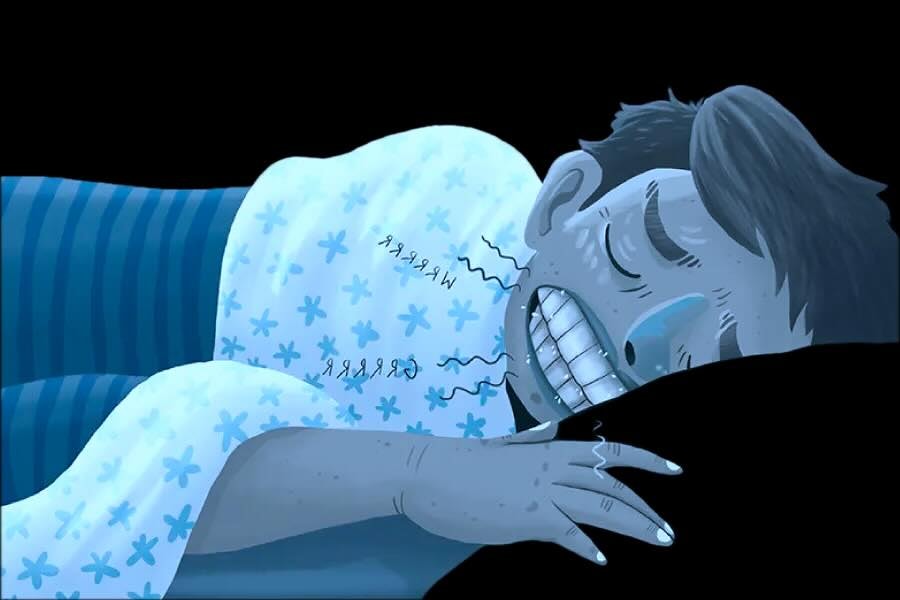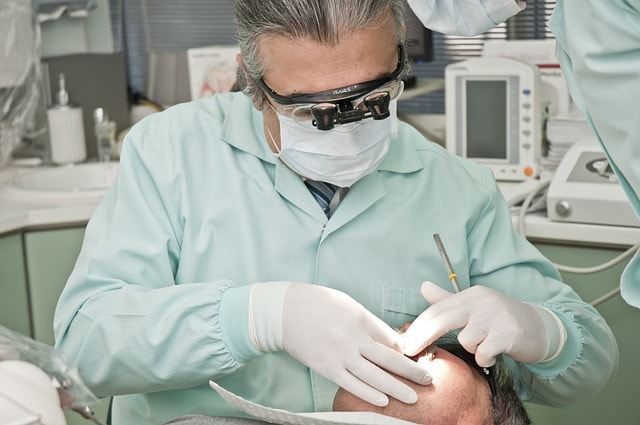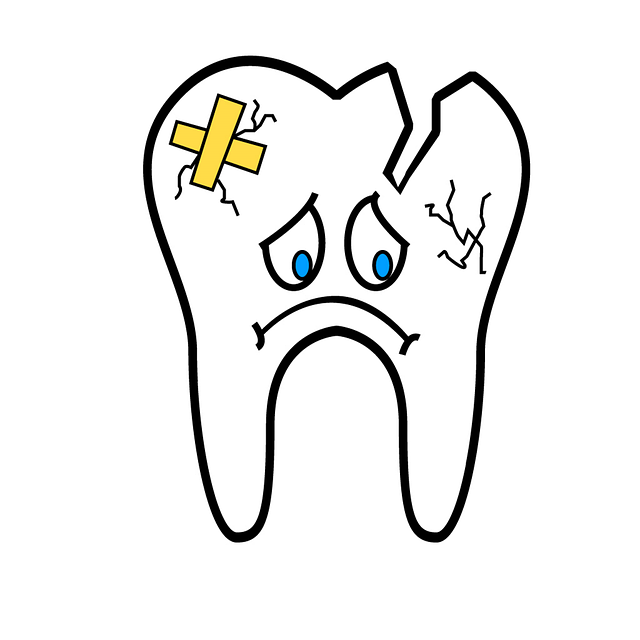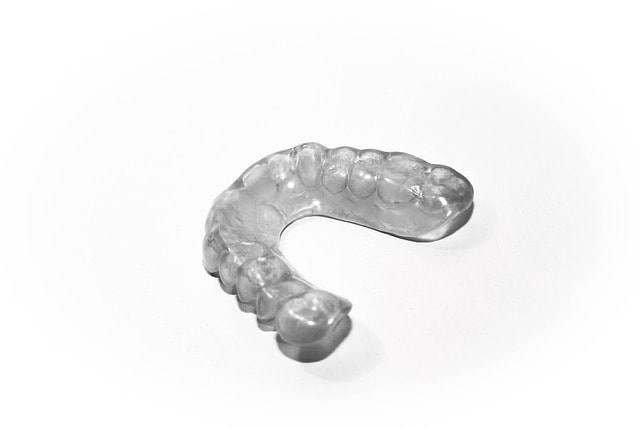Broken Tooth Syndrome happens when a tooth develops tiny cracks that are hard to detect but cause pain, especially while chewing. This article covers everything you need to know about its causes, symptoms, and the available treatment options.
Key Takeaways
Broken Tooth Syndrome is primarily caused by trauma, bruxism, and dental caries, each contributing to tooth fractures in different ways.
Symptoms such as sharp pain when chewing, sensitivity to temperature, and intermittent discomfort indicate the presence of cracks and require prompt dental evaluation.
Early diagnosis and treatment are crucial to prevent severe complications and preserve the integrity of the natural tooth structure, with preventive measures including good oral hygiene, mouthguards, and avoiding hard foods.
Causes of Broken Tooth Syndrome

Knowing the root causes of Broken Tooth Syndrome aids in both prevention and treatment. Various factors can lead to a cracked tooth, each with its unique set of challenges.
Among the primary culprits are trauma and accidents, bruxism (teeth grinding), and the presence of dental caries and large fillings.
Trauma and accidents
Accidents happen when we least expect them, and our teeth are often the unintended victims. Physical injuries sustained from sports activities or unexpected falls are common causes of tooth fractures, especially in the anterior teeth where the force of impact is greatest. Identifying signs of trauma, like visible cracks or chips, helps in seeking prompt dental care to prevent long-term damage, including tooth fracture.
Trauma can manifest in various forms, from minor chips to complete breaks in the tooth structure, including an incomplete tooth fracture. Prompt evaluation by a dental professional helps determine the extent of damage and initiate appropriate treatment. Ignoring a fractured tooth can lead to complications, making early intervention vital.
Bruxism (teeth grinding)
Bruxism, or teeth grinding, is a silent enemy that often strikes during sleep or periods of high stress. This involuntary clenching and grinding can significantly wear down tooth enamel, making teeth more susceptible to damage. Over time, the constant pressure and friction can lead to cracks, especially in the posterior teeth, which bear the brunt of our chewing forces.
As the enamel wears down, the underlying tooth structure becomes exposed and vulnerable. This can result in various forms of damage, including cracked tooth syndrome, where the cracks may be incomplete but still cause significant discomfort. The mandibular molars are particularly prone to such damage due to their position and function.
Managing bruxism requires addressing underlying causes like stress and using protective measures such as mouthguards to reduce impact on teeth. Without intervention, bruxism can lead to severe tooth fractures, necessitating more complex treatments like root canal therapy or even tooth extraction.
Dental caries and large fillings
Dental caries, commonly known as cavities, are more than just a nuisance; they can significantly weaken tooth structure, making them more prone to fractures. When large fillings are used to repair cavities, they can compromise the tooth’s integrity, increasing the risk of cracks and breaks.
Large dental restorations, especially those that are old or poorly fitted, can exacerbate the problem. These restorations can create points of weakness in the tooth, leading to incomplete tooth fractures that may go unnoticed until they cause significant pain or discomfort. The maxillary first molar teeth are often affected due to their complex structure and heavy use in chewing.
Good oral hygiene practices and regular dental check-ups prevent dental caries. Early detection and treatment of cavities can prevent the need for large fillings and reduce the risk of cracked teeth. Maintaining the integrity of the natural tooth structure is essential for long-term dental health.
Symptoms of Broken Tooth Syndrome

Recognizing the symptoms of Broken Tooth Syndrome is the first step toward effective management. The signs can vary widely, making it essential to pay attention to any unusual sensations or discomfort in your teeth.
Common symptoms include sharp pain when chewing, sensitivity to temperature, and intermittent discomfort.
Sharp pain when chewing
Sharp pain when biting down is a hallmark symptom of cracked tooth syndrome cts. This pain can be sudden and intense, often triggered by biting on hard foods like nuts or candies. The discomfort may be fleeting but can recur with each bite, indicating a potential crack in the tooth structure.
The pain is usually localized to the affected tooth and can vary in intensity. Ignoring this symptom can lead to more severe damage, as the repeated pressure on the crack can widen it, making the tooth more vulnerable to further fractures.
Sensitivity to temperature
Temperature sensitivity is another common symptom of Broken Tooth Syndrome. Individuals may experience sharp pain or discomfort when consuming hot or cold foods and drinks. This sensitivity can be particularly noticeable with items like hot coffee or ice cream, and it can also be associated with split tooth syndrome.
The discomfort from temperature sensitivity can significantly impact one’s quality of life, limiting dietary choices and causing ongoing pain. This symptom often indicates underlying issues such as cracks or fractures in the tooth enamel, necessitating prompt dental evaluation.
Intermittent discomfort
Intermittent discomfort can make it challenging to pinpoint the exact cause of the pain. Patients with Broken Tooth Syndrome often report fluctuations in pain intensity, making it difficult to identify the specific tooth or the nature of the problem. This variability in symptoms can delay diagnosis and treatment, leading to further complications.
Seek professional dental advice if you experience ongoing or recurrent discomfort; early intervention can prevent more severe damage and improve overall dental health.
Diagnosing Broken Tooth Syndrome

An accurate diagnosis of Broken Tooth Syndrome is vital for effective treatment. Dentists use various diagnostic techniques for diagnosing cracked tooth syndrome to identify cracks and fractures in teeth. These methods include visual examination, bite tests, and advanced imaging techniques.
Visual examination
Visual inspection is often the first step in diagnosing cracked teeth. Dentists use magnifying loupes to enhance their ability to detect visible cracks during examinations. Isolated periodontal pockets observed during probing can also indicate a split tooth rather than a simple crack.
A thorough visual examination can reveal signs of damage that might not be apparent to the untrained eye. Early diagnosis through visual inspection can help initiate timely treatment, preventing further deterioration of the tooth structure.
Bite tests
Bite tests are another valuable diagnostic tool for identifying cracked teeth. These tests involve using specific tools designed to isolate pressure on individual cusps, helping to reproduce the pain associated with the fractured tooth. By pinpointing the exact location of the pain, dentists can confirm the presence of a crack.
Bite tests are particularly useful for diagnosing incomplete fractures that may not be visible during a visual examination. This method helps in accurately identifying the affected tooth and planning the appropriate treatment.
Advanced imaging techniques (not readily available in dental practices)
Advanced imaging techniques, though not readily available in all dental practices, offer enhanced visibility of hidden fractures. Infrared thermography and transillumination are particularly effective in detecting small cracks that traditional methods might overlook. Infrared thermography can reveal minute fractures, while transillumination highlights cracks more efficiently when the tooth is properly cleaned.
Despite their limited availability, these advanced techniques are valuable for early diagnosis, ensuring that even the smallest cracks are identified and treated promptly.
Treatment Options for Broken Tooth Syndrome

Treating Broken Tooth Syndrome involves various approaches depending on the severity and location of the crack. Common treatments include dental bonding, crowns, root canal therapy, and tooth extraction. Each method aims to restore the tooth’s function and prevent further damage.
Dental bonding
Dental bonding is a conservative treatment option for minor cracks. This procedure involves using composite resin or porcelain to fill the cracks and reinforce the tooth structure. Bonding not only repairs the damage but also enhances the appearance of the affected tooth.
This method is especially effective for small cracks that have not compromised the tooth’s integrity. Early intervention with bonding can prevent the need for more invasive treatments and preserve the natural tooth structure.
Crowns
For more severe cracks, dental crowns are often recommended. Crowns are designed to protect and strengthen the cracked tooth, restoring its functionality and appearance. They can be made from various materials, including gold, porcelain, and metal alloys.
Crowns provide structural support to severely damaged teeth, preventing further fractures and decay. This treatment is especially beneficial for posterior teeth, which endure significant chewing forces.
Root canal therapy
Root canal therapy is necessary when a crack allows bacteria to invade the deeper layers of the tooth, causing pulpal injuries. During this procedure, the infected pulp is removed, and the tooth is sealed to prevent further infection, especially in cases that may require root canals.
This treatment is often combined with the placement of a dental crown to provide additional protection and restore the tooth’s functionality. Root canal therapy can save a damaged tooth from extraction, preserving its natural structure.
Tooth extraction
In cases where a tooth is too damaged to be repaired, extraction may be necessary. This procedure involves carefully removing the entire damaged tooth to prevent further complications. While extraction is a last resort, it is sometimes the best option to ensure overall dental health.
After extraction, various restorative options, such as dental implants or bridges, can be considered to replace the missing tooth. These solutions help maintain the integrity of the dental arch and prevent shifting of adjacent teeth.
Preventing Broken Tooth Syndrome

Prevention is always better than cure, and this holds true for Broken Tooth Syndrome. By adopting good oral hygiene practices, wearing mouthguards, and avoiding hard foods, you can significantly reduce the risk of cracked teeth.
Good oral hygiene practices
Maintaining good oral hygiene is fundamental to preventing dental issues, including cracked teeth. Regular dental visits play a vital role in detecting and addressing potential problems before they escalate. Informing your dentist about any lifestyle changes can also help tailor preventive measures to your specific needs.
Brushing and flossing regularly, along with using fluoride toothpaste, can strengthen tooth enamel and reduce the risk of cracks. Proper oral hygiene practices are essential for maintaining overall dental health and preventing complications.
Wearing mouthguards
Mouthguards are an effective preventive measure for protecting teeth from trauma and breakage during sports or other activities. Mouthguards during contact sports can prevent injuries to the teeth and reduce the risk of fractures.
Nightguards, worn while sleeping, can help mitigate the effects of bruxism by distributing masticatory forces evenly and reducing the frequency of teeth grinding. This simple yet effective device can prevent significant damage to the tooth structure.
Avoiding hard foods
Chewing on hard items like ice or hard candies poses a significant risk of tooth fractures. Avoiding such foods can significantly lower the chances of experiencing cracked teeth and other dental issues.
Choosing softer foods and being mindful of what you chew can greatly preserve your dental health. This simple preventive measure can save you from the pain and complications associated with Broken Tooth Syndrome.
The Importance of Early Diagnosis and Treatment of Broken Tooth Syndrome
Early diagnosis and treatment of Broken Tooth Syndrome help prevent severe complications. If cracks are left untreated, they can result in severe pain. Additionally, this may lead to pulpal death, abscesses, and the potential loss of the tooth.
Early intervention mitigates these risks and improves the prognosis.
Preventing further damage
If a severe crack is left untreated, it can widen, leading to infection or abscess formation. Delayed treatment hampers the assessment of the crack’s severity and prevents further damage.
Untreated teeth crack can cause further loss of tooth structure due to decay or breakage, making early intervention essential. Adjusting biting pressure and seeking professional advice can help prevent further deterioration of a tooth crack.
Preserving natural tooth structure
Early treatment of cracked teeth is essential for maintaining the integrity of natural tooth structures, including enamel and dentin. If cracked teeth are not treated promptly, the natural materials may become too badly damaged or decayed beyond repairable limits. This underscores the importance of timely intervention to preserve the tooth’s functionality and appearance.
By addressing cracks early, conservative treatments like bonding and crowns can be used to reinforce the tooth without extensive removal of natural tissue. This approach not only extends the life of the tooth but also maintains overall dental health.
Summary
Broken Tooth Syndrome is a common yet often misunderstood dental issue that can significantly impact your quality of life. By understanding the causes, such as trauma, bruxism, and dental caries, you can take proactive steps to protect your teeth. Recognizing the symptoms early, like sharp pain when chewing or sensitivity to temperature, is crucial for seeking timely dental care.
Accurate diagnosis through visual examinations, bite tests, and advanced imaging techniques can help identify and treat cracks before they lead to severe complications. Treatment options vary based on the severity of the crack and range from conservative methods like dental bonding to more extensive procedures like root canal therapy or tooth extraction.
Preventive measures, including good oral hygiene, wearing mouthguards, and avoiding hard foods, can significantly reduce the risk of cracked teeth. Early diagnosis and treatment not only prevent further damage but also preserve your natural tooth structure, ensuring long-term dental health. By taking these steps, you can maintain a healthy, pain-free smile and avoid the complications associated with Broken Tooth Syndrome.
Frequently Asked Questions
What are the main causes of Broken Tooth Syndrome?**?
The primary causes of Broken Tooth Syndrome are trauma, bruxism (teeth grinding), and dental caries or large fillings. These factors compromise tooth strength, increasing the risk of fractures.
What symptoms should I look out for?**?
You should watch for sharp pain when chewing, sensitivity to hot and cold foods, and intermittent discomfort, as these symptoms may indicate an underlying issue. Addressing these signs promptly is essential for effective treatment.
How is Broken Tooth Syndrome diagnosed?**?
Broken Tooth Syndrome is diagnosed through a combination of visual examinations, bite tests, and advanced imaging techniques to detect cracks in the teeth. It is crucial to identify any hidden damage to ensure appropriate treatment.
What treatment options are available for Broken Tooth Syndrome?**?
Treatment options for Broken Tooth Syndrome consist of dental bonding, crowns, root canal therapy, and tooth extraction. The appropriate choice of treatment depends on the specific characteristics of the crack, including its type, location, and severity.
How can I prevent Broken Tooth Syndrome?**?
To prevent Broken Tooth Syndrome, it is essential to maintain good oral hygiene, wear mouthguards during sports or while sleeping, and avoid hard foods that may cause tooth fractures. Taking these precautions can significantly reduce your risk of dental injuries.
